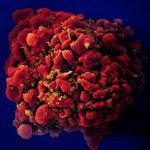Link to Pubmed [PMID] – 24745335
Immunity 2014 Apr;40(4):608-20
Segmented filamentous bacterium (SFB) is a symbiont that drives postnatal maturation of gut adaptive immune responses. In contrast to nonpathogenic E. coli, SFB stimulated vigorous development of Peyer’s patches germinal centers but paradoxically induced only a low frequency of specific immunoglobulin A (IgA)-secreting cells with delayed accumulation of somatic mutations. Moreover, blocking Peyer’s patch development abolished IgA responses to E. coli, but not to SFB. Indeed, SFB stimulated the postnatal development of isolated lymphoid follicles and tertiary lymphoid tissue, which substituted for Peyer’s patches as inductive sites for intestinal IgA and SFB-specific T helper 17 (Th17) cell responses. Strikingly, in mice depleted of gut organized lymphoid tissue, SFB still induced a substantial but nonspecific intestinal Th17 cell response. These results demonstrate that SFB has the remarkable capacity to induce and stimulate multiple types of intestinal lymphoid tissues that cooperate to generate potent IgA and Th17 cell responses displaying only limited target specificity.

